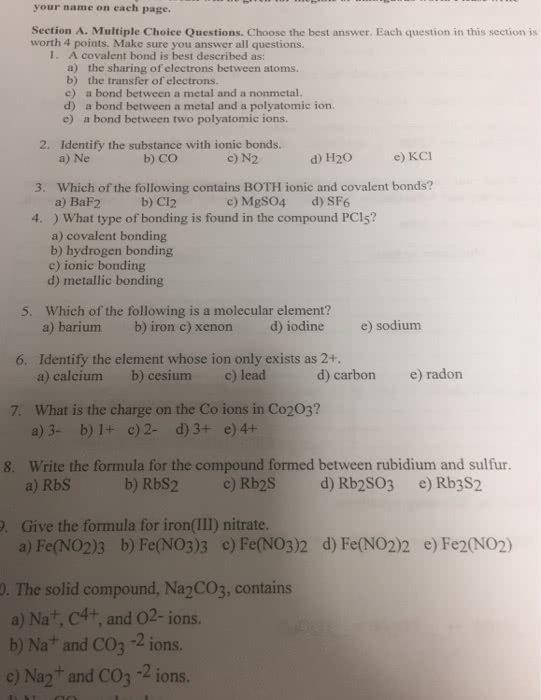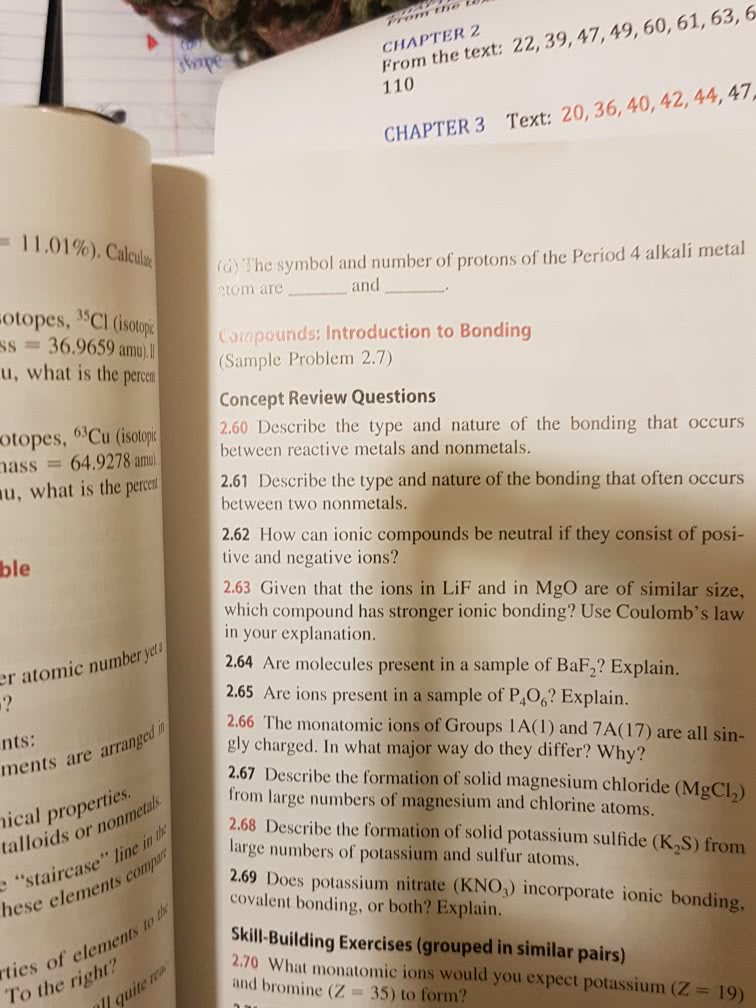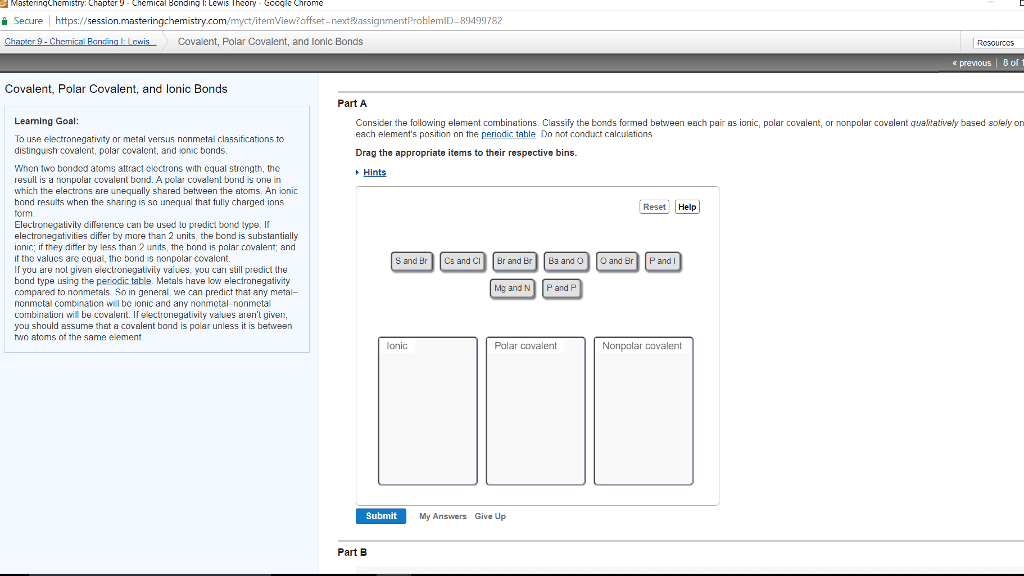CHEM 200 Chapter Notes - Chapter 9: Delocalized Electron, Valence Electron, Metallic Bonding
Document Summary
Bonding lowers the potential energy between positive and negative particles, whether they are oppositely charged ions or nuclei and electron pairs. The type of and strength of chemical bonds determine the properties of a substance. Ionic bonding the idealized type of bonding based on the attraction of oppositely charged ions that arise through electron transfer between atoms with large differences in their tendencies to lose or gain electrons; typically metals and nonmetals. A metal atom (low ie) loses its one or two valence electrons and a nonmetal atom (highly negative ea) gains the electron(s) Electron transfer: from metal to nonmetal; when it occurs, each atom forms an ion with a hobble gas electron configuration. The electrostatic attractions between these positive and negative ions draw them into a three-dimensional array to form an ionic solid: nonmetal with nonmetal: electron sharing and covalent bonding.




